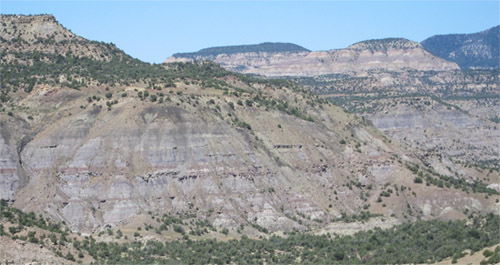History and future of MYRES
MYRES was initiated as a grassroots, community-driven collective of early-career researchers responding to a need for a stronger voice among junior members of the international Earth-science community. A primary objective of the MYRES initiative is to build an “international, interdisciplinary, open and unbiased community of colleagues who interact regularly to informally exchange ideas, data, and tools, and formulate new collaborative research projects” [Simons et al., 2004]. Initial MYRES developers noted that at even small, specialty meetings, it can be difficult for young researchers to find opportunities to speak freely and interact because more established researchers and ideas tend to dominate discussions. Providing a space for early-career researchers to forge new relationships and openly exchange ideas is effective way of growing strong, cooperative, interdisciplinary research communities.
Since 2004, biennial MYRES meetings have been proposed by self-organized groups of motivated early-career scientists. Meeting topics have been selected by online vote and represent a broad range of Earth-science topics (Table). Proposals for the next interdisciplinary MYRES meeting are now being solicited. We encourage any interested early-career researchers (customarily within 10 years of earning their PhD) to submit ideas and rally their communities to express support in the online vote.
To propose a meeting, email a 1-3 page proposal to the MYRES V organizing committee by May 31, 2013. Please explain the interdisciplinary science theme, meeting goals and format. Proposals will be posted for voting starting June 15, 2013.
MYRES has no official affiliations or management structure and has been fueled solely by volunteer efforts and generous support from funding agencies solicited on a meeting-by-meeting basis by conference organizers. The health and survival of MYRES lies entirely with the Earth-science community.
Table: Summary of previous MYRES meetings.
Meeting |
Year |
Theme |
Location |
Participants |
MYRES I |
2004 |
Heat, helium, hot spots, and whole mantle convection |
La Jolla, California |
~100 |
MYRES II |
2006 |
Dynamics of the lithosphere |
Verbina, Italy |
119 |
MYRES III |
2008 |
Dynamic interaction of life and its landscape |
New Orleans, Louisiana |
66 |
MYRES IV |
2010 |
Structures and processes of initial ecosystem development |
Cottbus, Germany |
23 |
MYRES V |
2012 |
The sedimentary record of landscape dynamics |
Salt Lake City, Utah |
54 |
MYRES references:
Simons, F.J., Becker, T.W., Kellogg, J.B., Billen, M., Hardebeck, J., Lee, C.A., Montesi, L.G.J., Panero, W., and Zhong, S., 2004, Young Solid Earth Researchers of the World Unite!: Eos, Transactions, American Geophysical Union, v. 85, p. 160.
Simons, F.J., Becker, T.W., Kellogg, J.B., Billen, M., Lee, C.A., Montesi, L.G.J., Panero, W., and Zhong, S., 2005, MYRES: A Program to Unite Young Solid Earth Researchers: Eos, Transactions, American Geophysical Union, v. 86, p. 48-49.



